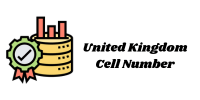As technology continues to advance, the use of databases has become increasingly prevalent in various industries. Databases are crucial in data management and storage, allowing businesses to store, access, and manage large amounts of information. However, not all databases are created equal, and some can be more seductive than others.
A seductive special database (SSDB) refers to a type of database
That contains sensitive information that is often used for malicious purposes. These databases can include information such as passwords, credit card information, and social security numbers. SSDBs are often used by hackers to gain unauthorized access to systems, steal identities, or conduct other illegal activities.
However, not all SSDBs are created by hackers. Some organizations create their own SSDBs for legitimate purposes. For example, a marketing company may create an SSDB containing customer information to help target specific demographics for advertising campaigns. While the intentions may be well-meaning, these SSDBs can still pose a risk if not properly secured.
The risks of SSDBs are numerous and significant. Hackers Database can use SSDBs to steal identities, commit fraud, and access sensitive information. If an SSDB contains customer information, it can be devastating for both the customers and the organization if it is breached. Customers may lose trust in the organization and may suffer financial losses if their information is used for malicious purposes. Organizations may face legal repercussions and financial penalties for failing to protect customer information.
Despite the risks, there are also potential rewards for using SSDBs. These databases can be useful for organizations to store and manage sensitive information, allowing for more efficient and effective operations. An SSDB can also help with targeted marketing campaigns, increasing sales and revenue. Additionally, an SSDB can help with fraud prevention, as it allows for easier tracking and monitoring of potential fraud activities.
So, what can be done to mitigate the risks associated with SSDBs?
The first step is to properly secure the database. This includes using strong passwords, limiting access to the database, and regularly monitoring for any suspicious activity. Organizations should also ensure that any third-party vendors they work with who may have access to their SSDBs also have proper security measures in place.
Another way to mitigate risk is through education and awareness. All employees who have access to the SSDB should be trained on how to properly handle sensitive information and be made aware of the potential risks associated with SSDBs. This can help prevent accidental breaches or mistakes that could lead to unauthorized access.
In conclusion, seductive special databases can be both a risk and a reward. While they can be useful for organizations in storing and managing sensitive information, they can also UK Cell Number be a target for hackers and pose significant risks to customers and organizations. By properly securing the SSDB and educating employees, organizations can mitigate these risks and reap the rewards of using an SSDB. It is important for organizations to understand the potential risks and take proactive measures to protect sensitive information and prevent unauthorized access to their SSDBs.


